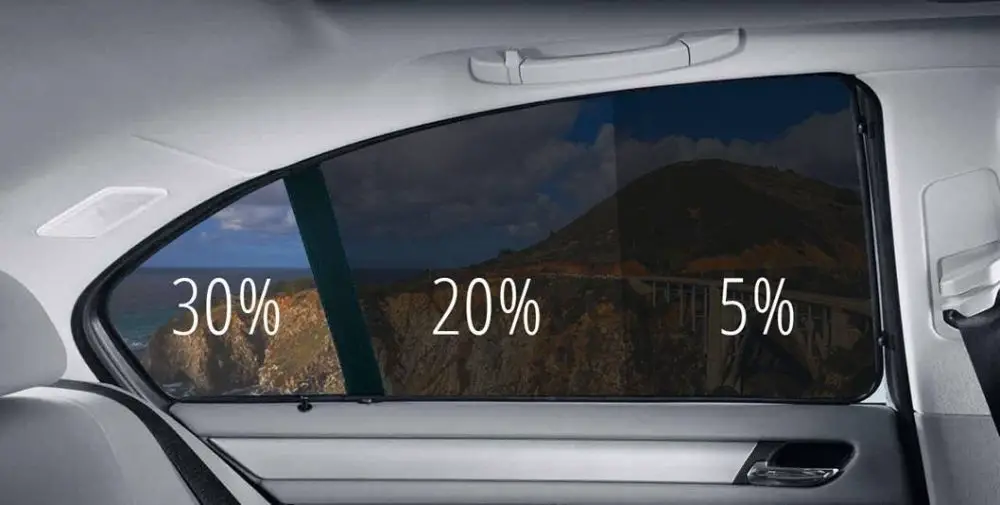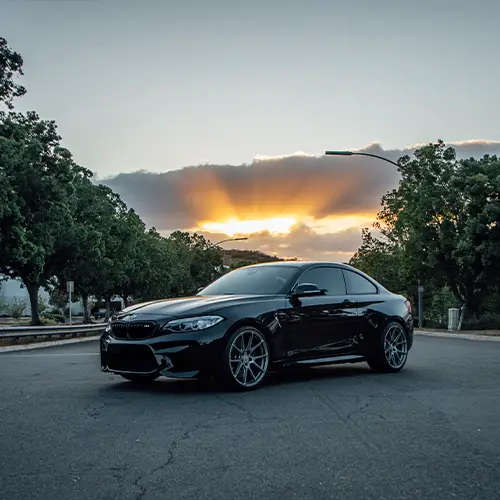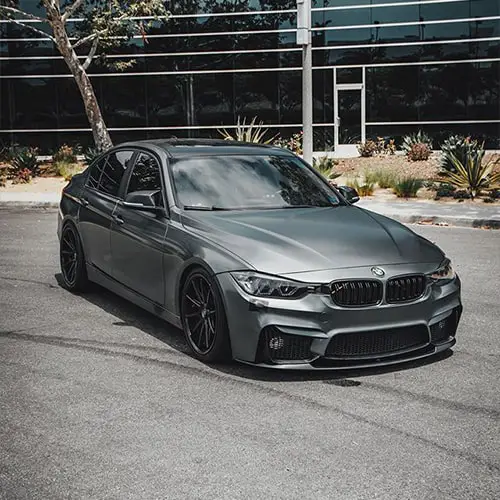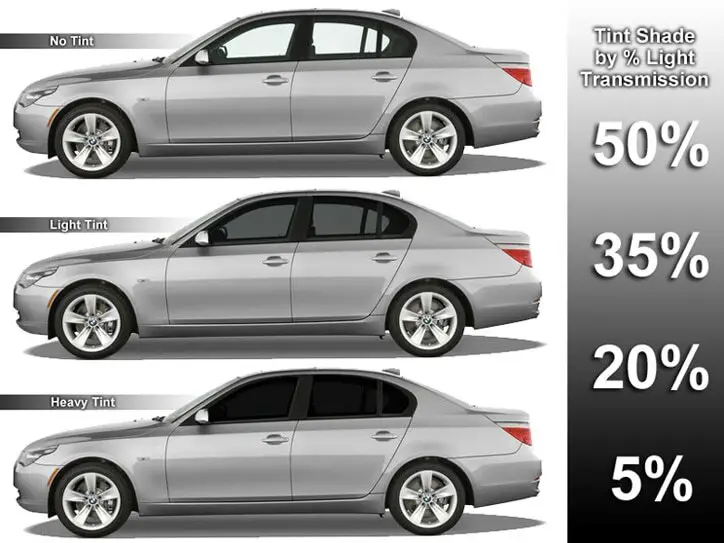Tint Laws – With Examples of Tint Levels
How dark can you go?
What are the tint laws in your state?
1. Tint Laws for Alabama – AL are 32% for the front side windows, 32% for the back side windows, and 32% for the rear windows.
2. Tint Laws for Alaska – AK are 70% for the front side windows, 40% for the back side windows, and 40% for the rear windows.
3. Tint Laws for Arizona – AZ are 33% for the front side windows, any % for the back side windows, and any % for the rear windows.
4. Tint Laws for Arkansas – AR are 25% for the front side windows, 10% for the back side windows, and 10% for the rear windows.
5. Tint Laws for California – CA are 70% for the front side windows, any % for the back side windows, and any % for the rear windows.
6. Tint Laws for Colorado – CO are 27% for the front side windows, 27% for the back side windows, and 27% for the rear windows.
7. Tint Laws for Connecticut – CT are 35% for the front side windows, 35% for the back side windows, and any for the rear windows.
8. Tint Laws for Delaware – DE are 70% for the front side windows, any % for the back side windows, and any % for the rear windows.
9. Tint Laws for Florida – FL are 28% for the front side windows, 15% for the back side windows, and 15% for the rear windows.
10. Tint Laws for Georgia – GA are 32% for the front side windows, 32% for the back side windows, and 32% for the rear windows.
11. Tint Laws for Hawaii – HI are 35% for the front side windows, 35% for the back side windows, and 35% for the rear windows.
12. Tint Laws for Idaho – ID are 35% for the front side windows, 20% for the back side windows, and 35% for the rear windows.
13. Tint Laws for Illinois – IL are 35% for the front side windows, 35% for the back side windows, and 35% for the rear windows.
14. Tint Laws for Indiana – IN are 30% for the front side windows, 30% for the back side windows, and 30% for the rear windows.
15. Tint Laws for Iowa – IA are 70% for the front side windows, any % for the back side windows, and any % for the rear windows.
16. Tint Laws for Kansas – KS are 35% for the front side windows, 35% for the back side windows, and 35% for the rear windows.
17. Tint Laws for Kentucky – KY are 35% for the front side windows, 18% for the back side windows, and 18% for the rear windows.
18. Tint Laws for Louisiana – LA are 40% for the front side windows, 25% for the back side windows, and 12% for the rear windows.
19. Tint Laws for Maine – ME are 35% for the front side windows, any % for the back side windows, and any % for the rear windows.
20. Tint Laws for Maryland – MD are 35% for the front side windows, 35% for the back side windows, and 35% for the rear windows.
21. Tint Laws for Massachusetts – MA are 35% for the front side windows, 35% for the back side windows, and 35% for the rear windows.
22. Tint Laws for Michigan – MI are any % for the front side windows, any % for the back side windows, and any % for the rear windows.
23. Tint Laws for Minnesota – MN are 50% for the front side windows, 50% for the back side windows, and 50% for the rear windows.
24. Tint Laws for Mississippi – MS are 28% for the front side windows, 28% for the back side windows, and 28% for the rear windows.
25. Tint Laws for Missouri – MO are 35% for the front side windows, any % for the back side windows, and any % for the rear windows.
26. Tint Laws for Montana – MT are 24% for the front side windows, 14% for the back side windows, and 14% for the rear windows.
27. Tint Laws for Nebraska – NE are 35% for the front side windows, 20% for the back side windows, and 20% for the rear windows.
28. Tint Laws for Nevada – NV are 35% for the front side windows, any % for the back side windows, and any % for the rear windows.
29. Tint Laws for New Hampshire – NH does not allow tint on the front side windows but does allow any 35% tint for the back side windows and the rear windows.
30. Tint Laws for New Jersey – NJ does not allow tint on the front side windows but does allow any % tint for the back side windows and the rear windows.
31. Tint Laws for New Mexico – NM are 20% for the front side windows, 20% for the back side windows, and 20% for the rear windows.
32. Tint Laws for New York – NY are 70% for the front side windows, 70% for the back side windows, and any for the rear windows.
33. Tint Laws for North Carolina – NC are 35% for the front side windows, 35% for the back side windows, and 35% for the rear windows.
34. Tint Laws for North Dakota – ND are 50% for the front side windows, any % for the back side windows, and any % for the rear windows.
35. Tint Laws for Ohio – OH are 50% for the front side windows, any % for the back side windows, and any % for the rear windows.
36. Tint Laws for Oklahoma – OK are 25% for the front side windows, 25% for the back side windows, and 25% for the rear windows.
37. Tint Laws for Oregon – OR are 35% for the front side windows, 35% for the back side windows, and 35% for the rear windows.
38. Tint Laws for Pennsylvania – PA are 70% for the front side windows, 70% for the back side windows, and 70% for the rear windows.
39. Tint Laws for Rhode Island – RI are 70% for the front side windows, 70% for the back side windows, and 70% for the rear windows.
40. Tint Laws for South Carolina – SC are 27% for the front side windows, 27% for the back side windows, and 27% for the rear windows.
41. Tint Laws for South Dakota – SD are 35% for the front side windows, 20% for the back side windows, and 20% for the rear windows.
42. Tint Laws for Tennessee – TN are 35% for the front side windows, 35% for the back side windows, and 35% for the rear windows.
43. Tint Laws for Texas – TX are 25% for the front side windows, 25% for the back side windows, and any % for the rear windows.
44. Tint Laws for Utah – UT are 43% for the front side windows, any % for the back side windows, and any % for the rear windows.
45. Tint Laws for Vermont – VT does not allow tint on the front side windows but does allow any % tint for the back side windows and the rear windows.
46. Tint Laws for Virginia – VA are 50% for the front side windows, 35% for the back side windows, and 35% for the rear windows.
47. Tint Laws for Washington – WA are 24% for the front side windows, 24% for the back side windows, and 24% for the rear windows.
48. Tint Laws for West Virginia – WV are 35% for the front side windows, 35% for the back side windows, and 35% for the rear windows.
49. Tint Laws for Wisconsin – WI are 50% for the front side windows, 35% for the back side windows, and 35% for the rear windows.
50. Tint Laws for Wyoming – WY are 28% for the front side windows, 28% for the back side windows, and 28% for the rear windows.
Why are there window tint laws?
Your ability to react to things on the road may be impaired by window tints that are too dark. These laws are safety enforcing laws to keep everyone safe.
Although most states allow some form of window tinting, the main benefits of window tinting are to minimize the UV rays from the sun. Those with a higher risk of developing skin cancer should consider UV protection film in their vehicles. Window tint is recommended by the Skin Cancer Foundation as part of a proactive way to protect your skin.
Can I get pulled over for having tinted windows?
Yes, law enforcement can enforce window tint violations depending on the state’s tint law. Some law enforcement officers carry a device that can test the window tint for its light output, making sure it is within state minimum requirements.
Is limo tint legal?
Limo tint is considered to be around 5%, which is illegal in almost all states but Michigan for front side windows. Arizona, California, Delaware, Iowa, Maine, Michigan, Missouri, Nevada, New Jersey, North Dakota, Ohio, Utah, and Vermont allow any percentage of tint on the back side windows.
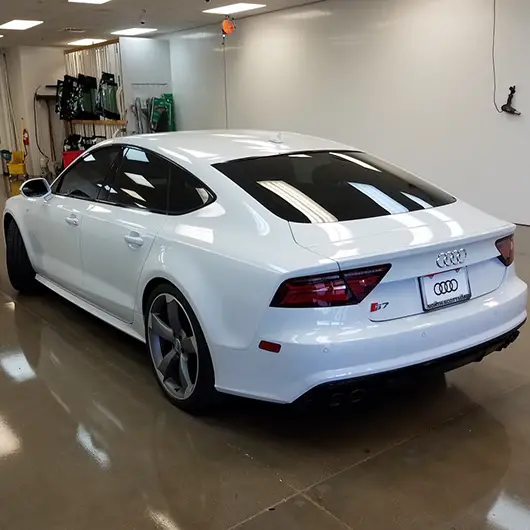
Audi S7 – 30% front side windows, 5% (limo tint) rear side windows and 5% (limo tint) rear window.
Popular Blogs
Don’t see the topic you’re looking for? We are still growing out knowledge base, let us know what you want to learn about!
Can BMW Charge at Tesla?
Can BMW Charge at Tesla? As of now, BMWs can't directly charge at Tesla Supercharger stations because Tesla uses a proprietary connector. However, with the right third-party adapter, BMW owners might be able to make it work, but it's always good to double-check...
Are BMW Motorcycles Reliable? A Comprehensive Dive into the World of BMW Bikes
Are BMW Motorcycles Reliable? BMW motorcycles are renowned for their top-notch engineering and build quality, making them a reliable choice for riders around the world. Whether you're hitting the open road or tackling rugged terrains, you can count on a BMW to be a...
Can BMW Take 87 Gas? Discover the Truth Behind the Octane Debate!
Can BMW Take 87 Gas? Certainly! While a BMW can technically run on 87 octane gas, it's not the optimal choice. BMW recommends using premium fuel for most of their models to ensure the best performance and longevity of the engine. So, while it might be tempting to...
Embrace the Future with the BMW Genius Program
You know, they often say that 'knowledge is power'. Well, that's never been truer than in the case of BMW's groundbreaking initiative - The BMW Genius Program. Tailor-made for every BMW enthusiast out there, this program sheds light on the latest technological...
A Comprehensive Dive into the BMW N63: A Blend of Power, Performance, and Precision
Hey there, gearheads! Welcome to a deep dive into the fascinating world of one of the most renowned engines out there: the BMW N63. We're about to embark on an exciting journey, exploring the good, the bad, and the powerful of this engineering marvel. Are you ready...
How BMW TPMS Works: A Comprehensive Guide
When it comes to innovation and performance, BMW never falls short. But how well do you know the intricacies of your vehicle, specifically the Tire Pressure Monitoring System (TPMS)? Let's take a journey to understand how BMW TPMS works. How BMW TPMS Works So,...
Can BMW Keys Be Reprogrammed? Your Comprehensive Guide
Ah, the wonders of technology! It's in everything these days, from the appliances in our homes to the phones in our hands. And of course, it's a big part of our beloved vehicles too, particularly in prestigious brands like BMW. One feature that often leaves car...
How BMW VANOS Works: A Comprehensive Guide to Variable Valve Timing
Introduction Welcome to our comprehensive guide on the fascinating topic of how BMW VANOS works. If you've ever wondered about the inner workings of your BMW engine and how it achieves optimal performance, you're in the right place. In this article, we'll take a...
How BMW Models Work – BMW Model Names Explained
BMW, or Bayerische Motoren Werke, a name synonymous with luxury, performance, and automotive engineering, often leaves many of us scratching our heads when it comes to deciphering their model naming conventions. Do you ever wonder what these series of letters and...
Will BMW Wheels Fit Mercedes? Exploring the Compatibility Between Two Iconic Brands
When it comes to automobiles, BMW and Mercedes-Benz are two of the most renowned and prestigious brands in the world. Both manufacturers have established themselves as leaders in the industry, producing vehicles that exude luxury, performance, and style. However,...

